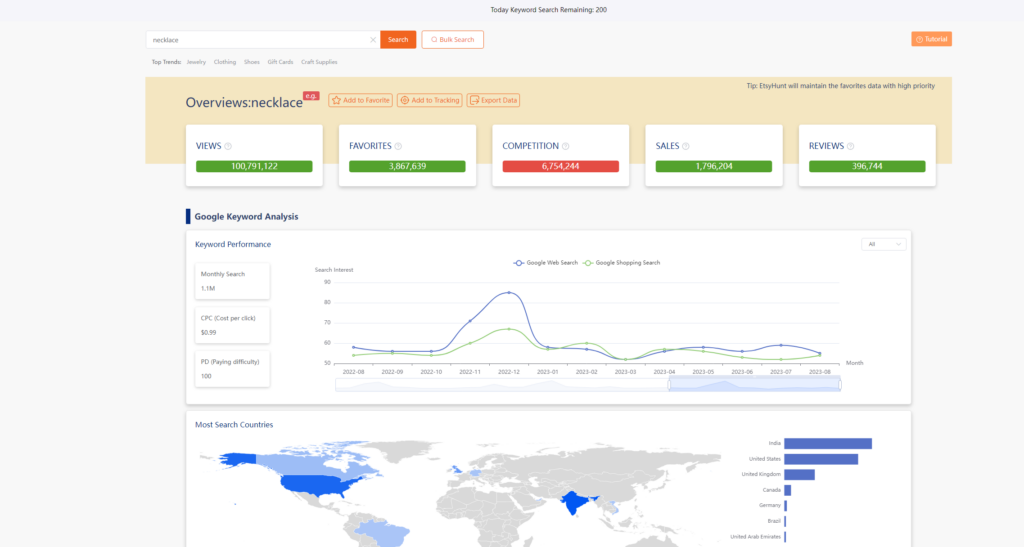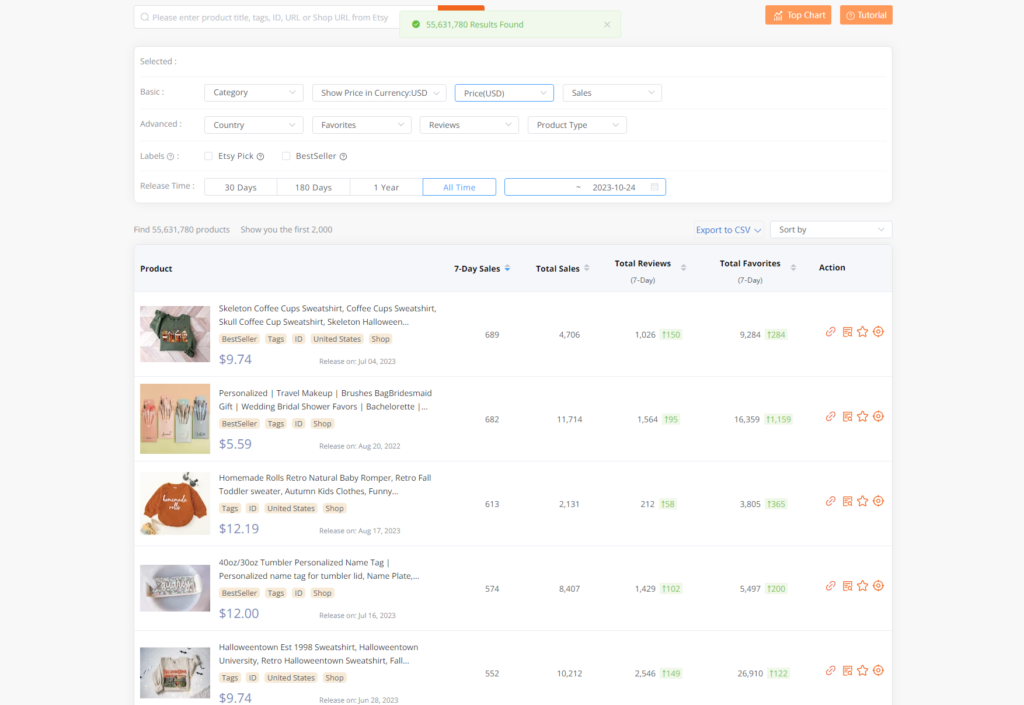EtsyHunt is a simple and user-friendly tool designed to help you with Etsy data and business analysis. After registering an account, you can use all the features for free. Below, we will demonstrate how to use EtsyHunt for Etsy data and business analysis using a practical example.
Let's assume you are a seller on Etsy, specializing in handmade leather goods, and you want to improve your store's ranking in search results to attract more buyers. You can follow these steps for data and business analysis:
Step 1: Problem Definition
First, clearly define the problem or opportunity you want to address or leverage, and translate it into specific analysis goals and questions. For example:
Analysis Goal: Improve store ranking in search results.
Analysis Question: How to optimize product titles, descriptions, tags, and other elements to improve relevance and click-through rates with popular keywords?
Step 2: Data Acquisition
Based on the problem definition, select or generate data relevant to your analysis goals and questions. For example, use the features of EtsyHunt to obtain the following data:

Keyword Research: Search and analyze popular keywords related to handmade leather goods on Etsy, and examine metrics such as search volume, competition level, click-through rate, etc. Discover some popular keywords like "leather journal," "leather wallet," "leather bag," which are highly popular and profitable.
Competing Products: Explore the top ten products for each keyword and learn how they use titles, descriptions, images, and other elements to attract buyers. Find successful products that use a format like "[Keyword] - [Feature] - [Brand]," for example, "Leather Journal - Personalized - Rustico."
Step 3: Data Analysis
Apply various analysis methods and techniques to explore, validate, model, or optimize the data, deriving valuable insights and information. For example, use the product research feature of EtsyHunt for the following analysis:
Product Comparison: Search and browse products on Etsy that are similar in style and positioning to your store, and examine detailed information such as total sales, weekly sales, number of reviews, favorites, pricing, images, etc. Filter and sort based on different criteria to find the most popular, profitable, or suitable products for your store. For instance, discover that some high-selling products use the following image style: "[Natural light] - [White background] - [Close-up detail]."
Product Optimization: Examine the keywords and tags used by each product and easily copy them to your own product listings to improve your products' ranking in search results. Optimize product titles, descriptions, images, and other elements based on EtsyHunt's recommendations. For example, discover optimization suggestions like "[Increase keyword density] - [Reduce irrelevant words] - [Highlight selling point]."
Step 4: Results Presentation
Present and explain the results of data analysis in a clear, concise, and persuasive manner. For example, use EtsyHunt's dashboard feature for the following presentation:
Dashboard: Create and view key metrics for your store and products, such as total sales, weekly sales, number of reviews, favorites, number of products, and compare them with other stores and products. Explore the performance of your store and products across different time periods, categories, regions, etc., and identify trends and changes.

By following these steps, you can utilize EtsyHunt for Etsy data and business analysis, helping you optimize product titles, descriptions, tags, and other elements to improve your store's ranking in search results and attract more buyers. Remember, data analysis is just part of the process, and you also need to take appropriate actions and optimization strategies based on the analysis results to achieve tangible business outcomes.
EtsyHunt offers many other features and tools to assist sellers with market research, competitive analysis, product optimization, and more. By fully utilizing these features, you can better understand market demand, optimize your product strategy, and achieve better performance on the Etsy platform.
Please note that the above content is an example, and the specific steps and methods for using EtsyHunt for data and business analysis may vary depending on your business needs and data available. In practice, you can adjust and optimize the approach based on your specific circumstances to achieve the best analysis and business results.